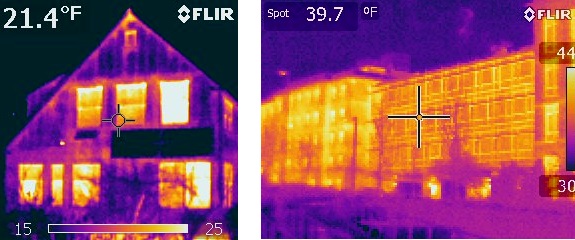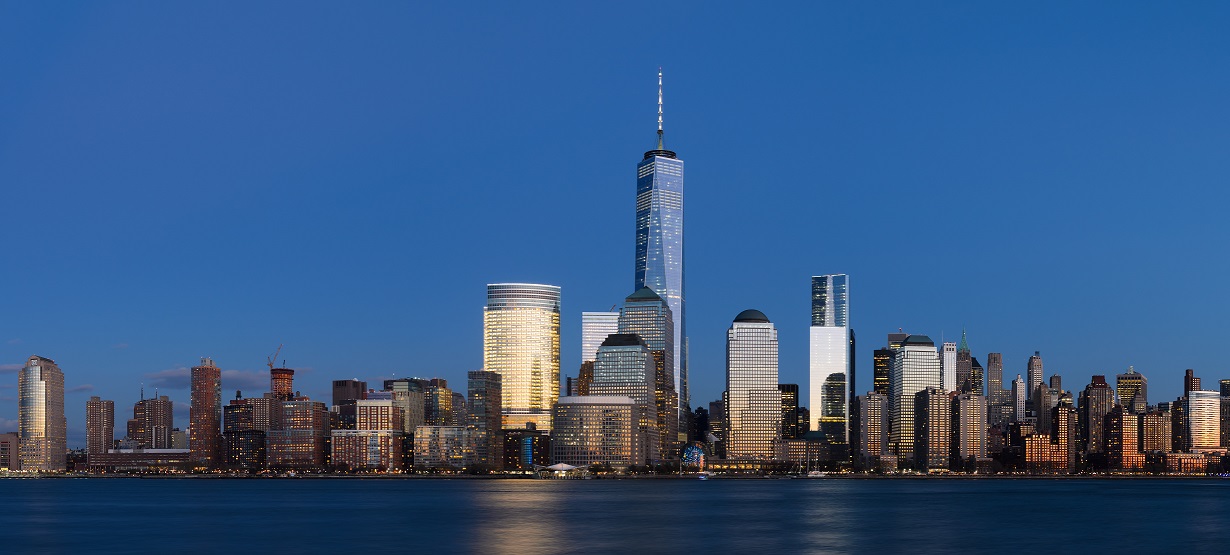Thinking Outside the Glass Box | Design for Climate Action
An open letter to my fellow architects and building designers:
By: Smita Chandra Thomas
Imagine a man standing outdoors on a blustery cold day wrapped in nothing but a flimsy sheet of plastic, trying to warm himself up with cup after cup of hot coffee. The same principle is at work in a building being pumped with hot air while clad in walls made of glass and steel, chugging away to keep the inside warm. Buildings encased in glass and steel are poor insulators, yet they are ubiquitous.
Glass and steel redefined structural and architectural possibilities in the industrial age. They have represented ‘modern’ architecture globally for the past few decades. They certainly have their advantages. Unfortunately, good thermal performance is not one of them.
Why this matters
Poor thermal performance in buildings leads to higher loads on fossil-fuel-fired heating and cooling systems, and larger renewable systems. The latest UN climate conference COP21 in Paris reiterated the urgency of reducing fossil-fuel energy use worldwide. The largest opportunity to meet this goal lies in buildings, globally the largest consumer of fossil fuels.
Top US architectural firms have risen to the challenge and signed up for the ‘Architecture 2030 Challenge’ to design new buildings with ‘zero’ fossil-fuel consumption by 2030. Zero-energy buildings are no futuristic dream either; while the exact definition of zero-energy is being hashed out, thousands of zero-energy units exist in the US today.
The first opportunity to reduce energy use in buildings lies in the building skin, which can impact the total energy use of a building by 10%-50%. And yet we continue to see buildings being encased in glass. Here are five myths surrounding glass skins that explain why this is cause for concern.
Myth #1. Glass is Energy-efficient
Ever touch a metal door frame in the winter? The rate of heat flow through single-pane glass is similar to that through a steel frame.
Yes, there is energy-efficient glass, but only compared to other glass. ‘Energy-efficient’ double-pane windows are two to four times better at resisting heat transfer, but still six to twelve times worse compared to cheap fiberglass batt insulation. Even the best available insulating glass types (such as electrochromic glazing) transfer heat faster than cheaply insulated solid walls.
For a building material, ‘energy-efficiency’ chiefly refers to its resistance to heat flow (indicated by R-value), higher resistance being better. The table below shows some rounded R-values for windows versus insulation used in solid walls.
| Windows | R-value (ft2°Fh/Btu) |
| Single-pane window | Less than R-1 (close to metal) |
| ‘Efficient’ Double-pane and triple-pane window | R-2 to R-3 |
| ‘Top-of-the-line’ Electrochromic glass window | R-6 at center; R-5 or less including frame |
| Wall insulation | |
| Fiberglass batt insulation 3.5” thick | R-11 |
| Foam insulation- expanded polystyrene 3” thick | R-10 |
| Fiberglass batt insulation 6” thick | R-19 |
| Foam insulation – extruded polystyrene 6” thick | R-30 |
The table above illustrates that solid walls have much higher resistance compared to glass. Solid walls gain additional R-value (R-1 to R-2) from other material layers and air gaps, but may lose 10-30% from thermal bypasses such as floor slabs and wall ties. All things considered, a well-constructed solid wall resists the transfer of heat flow several times better than the best glass window.

Heat-sensing camera images — where red and white ‘heat’ colors show higher heat loss — of a house wall with windows shows lower heat loss at the walls contrasted with high heat loss at the windows, and a university building wall with large windows shows high heat loss across the entire facade.
Glass is also at a disadvantage because it allows more radiant heat gain by allowing sunlight to pass through – a significant problem in hot climates – even with Low-E glass. It is mildly helpful in cold climates during the short daytime hours with direct sunlight exposure, but not significant enough to make up for the heat loss through low resistance.
Some creative and high-tech solutions to combat heat transfer in glass walls include double-walled systems (which take up valuable urban space) and double-glazed ventilated wall systems whose thermal performance is only marginally better.
Myth #2. Buildings need lot of glass for natural light
Glass does serve the important function of providing daylight. It is worth noting however that it takes a fraction of full daylight to provide sufficient lighting inside a building for normal use. In fact, glare is a real problem in most all-glass buildings making the use of interior shading devices a necessity. Daylight can be introduced using other advanced technologies instead such as translucent insulation.
Smart design strategies include smaller windows with features that help daylight penetrate deeper into the space.
Myth #3. Buildings need a lot of glass to provide views
Windows are important for views, such as a grand view from an open space. But all glass walls on every floor are an overkill, impractical for interior furnishings, and can induce vertigo necessitating waste of space near walls in tall buildings.
Besides, views to the inside of an all-glass office building from an opposite building can be messy! Optimal window sizing and positioning, on the other hand, can provide strategically framed views.
Myth #4. High-rise buildings need glass walls because they are lightweight
Glass-and-steel building skins are relatively low-weight which makes them a practical choice in tall buildings. A typical insulated brick wall construction is about five times the weight of a glazed wall – not a good alternative. Other light-weight insulated options are however available, such as exterior-grade metal-clad insulated panels – both thermally superior and aesthetically pleasing. The thermal performance of the metal framing— required for structural integrity – can also be improved by replacing smaller metal elements such as window frames with viable alternatives such as insulated fiberglass which is lighter and has better thermal properties.
Myth #5. Glass buildings are ‘green’
This is the mother of all myths. Confusion about the relationship between ‘green’ buildings and glass walls exists because many famous green buildings are clad in glass walls. Fact is, those buildings are efficient in spite of the glass walls, not because of them. As described above, glass walls have poor thermal performance. Green buildings encased in glass rely on other strategies to reduce energy use, and notable efficiency targets are indeed achieved. But starting with optimized exterior walls would take those buildings a whole lot further.
Time for a new international style of architecture?
Current environmental concerns demand a new style of architecture that moves away from all-glass and steel walls. With the COP21 Paris deal behind us, it is time to take a hard look at the use of glass curtain walls in buildings. As the global trend towards urbanization continues, the impact of this ubiquitous element of urban architecture becomes even more significant. Glass building skins do not jibe with energy efficiency goals. They may appear seductive and iconic, but they disregard the environment.
Beautiful solutions are a forte of the architectural community. Neo-futurist architects want to design for eco-sustainability. This means that buildings need to be built with the lowest possible demand for fossil fuels in the first place, and then to not waste the optimized energy that is being spent to condition them.
Future possibilities of new glazing options with spectacular thermal properties cannot be discounted. But in the meantime, building designers who understand the basics of the path to save energy – designing passive design solutions before leaning on mechanical systems and renewable energy – can lead us away from glass to more sophisticated solutions. Will you do your part to spread awareness about this by sharing this post?
Image credits: 1. Wikimedia Commons 2. Guy Marsden (used with permission) 3. The Building Science Group (used with permission)
This post was originally published in the sustainability magazine Triple Pundit
